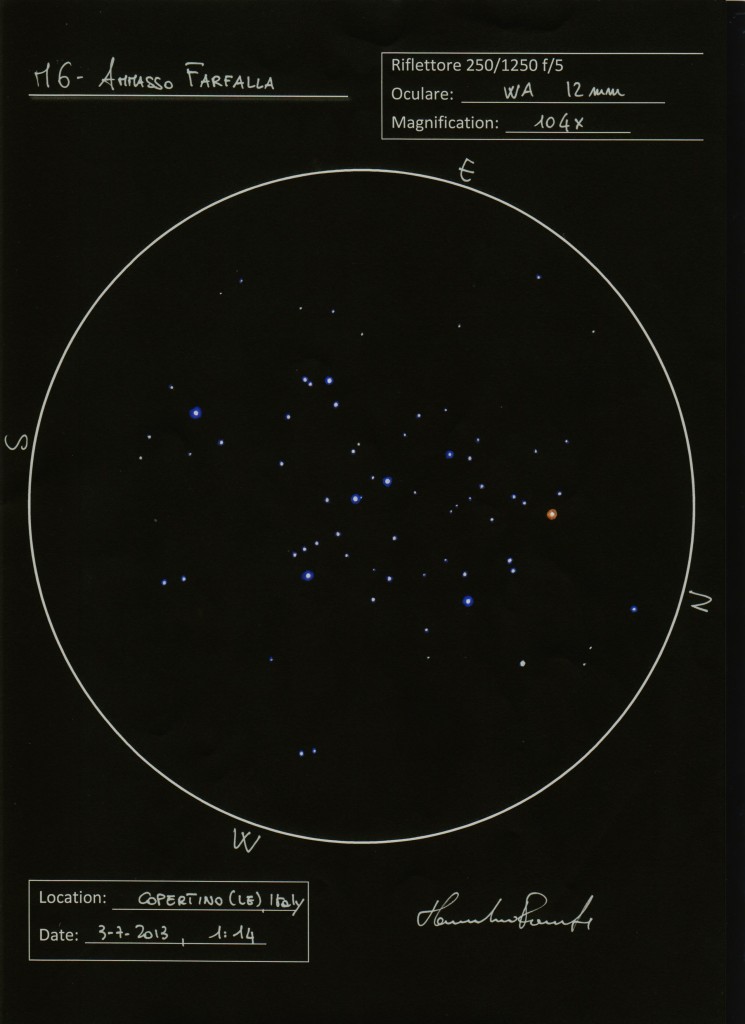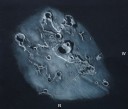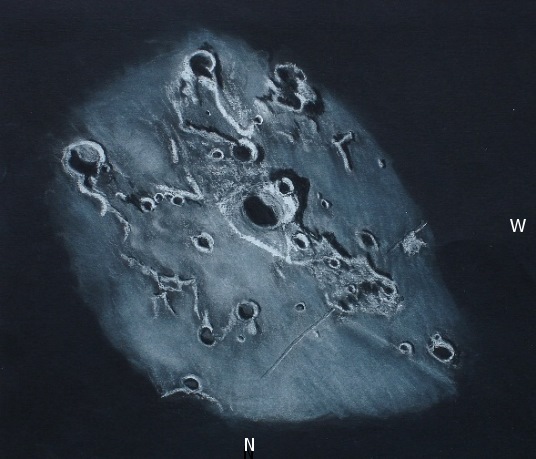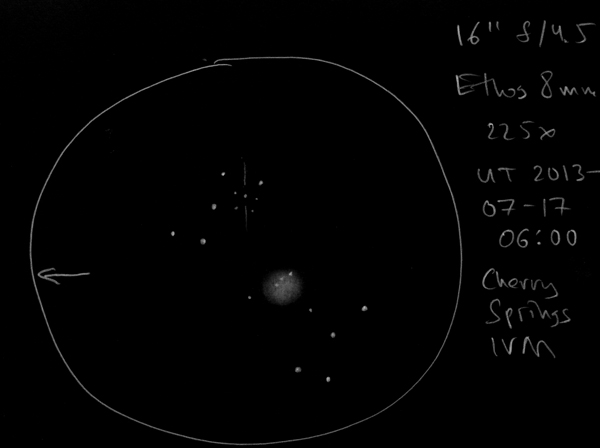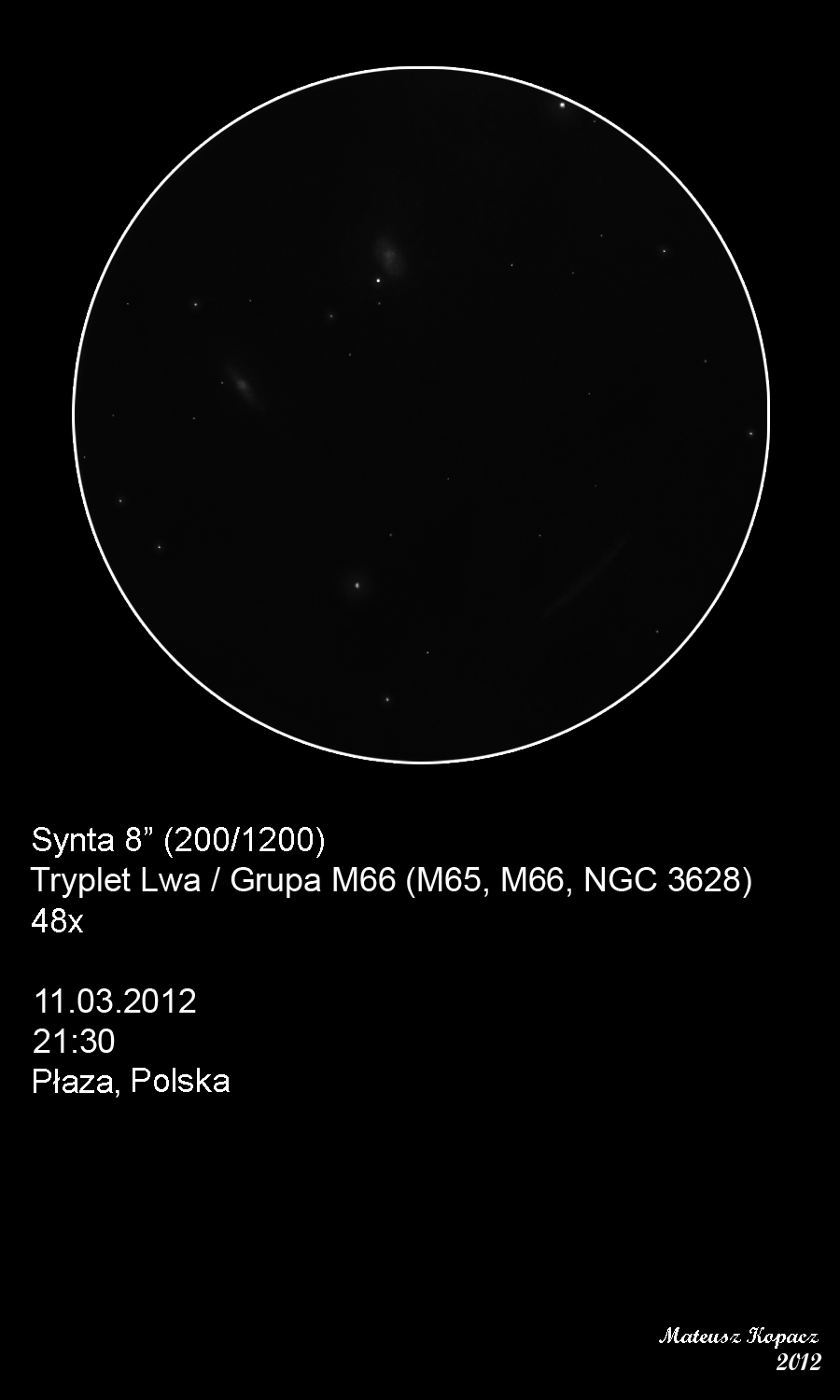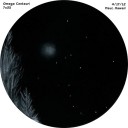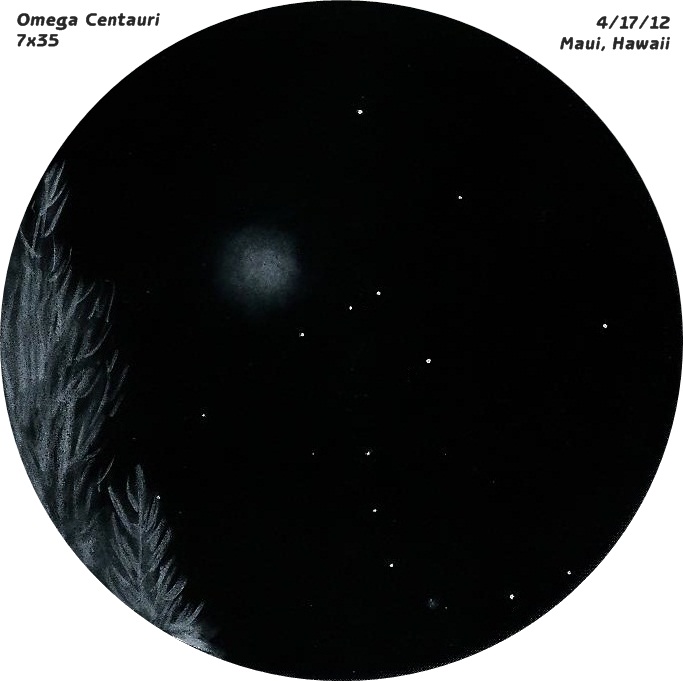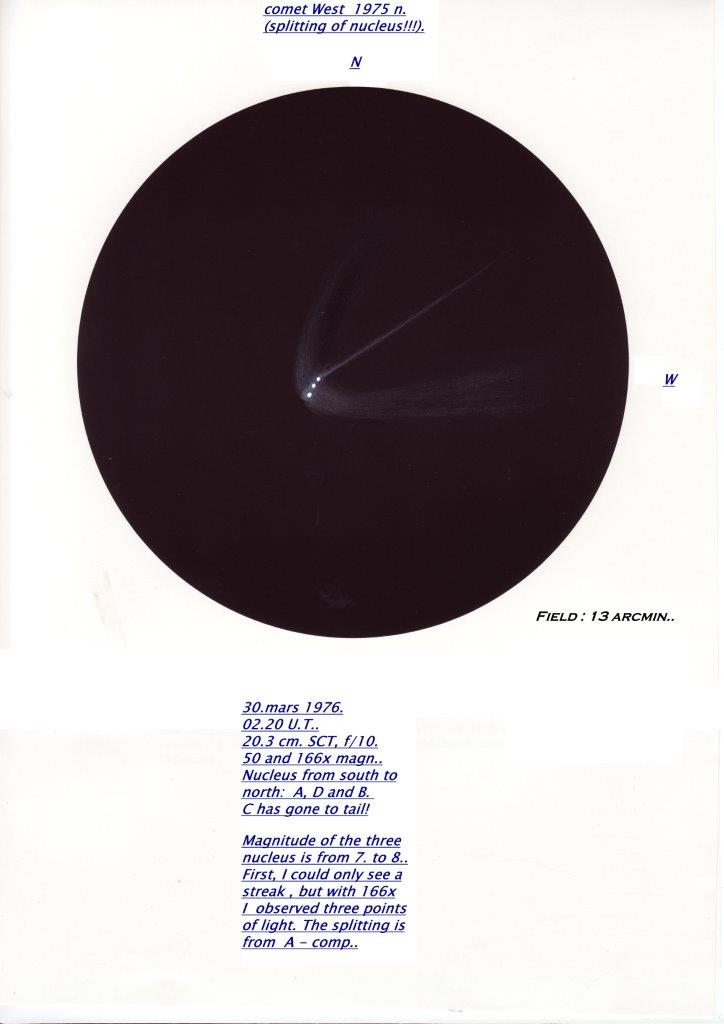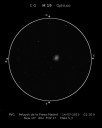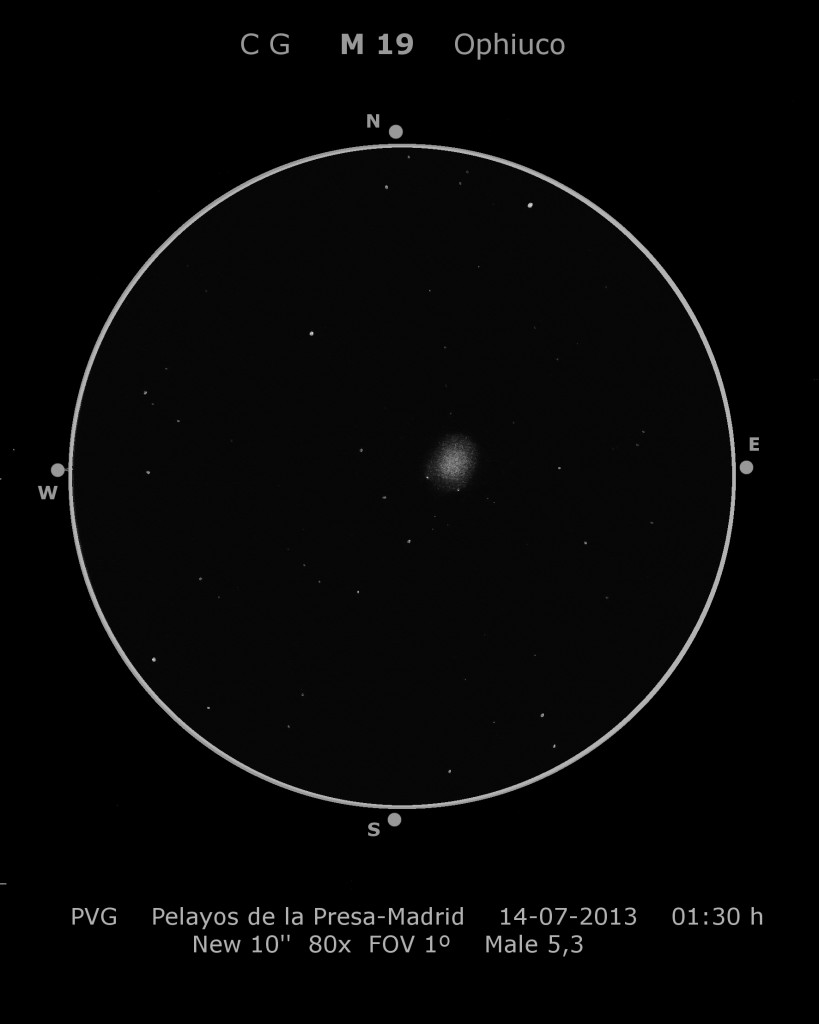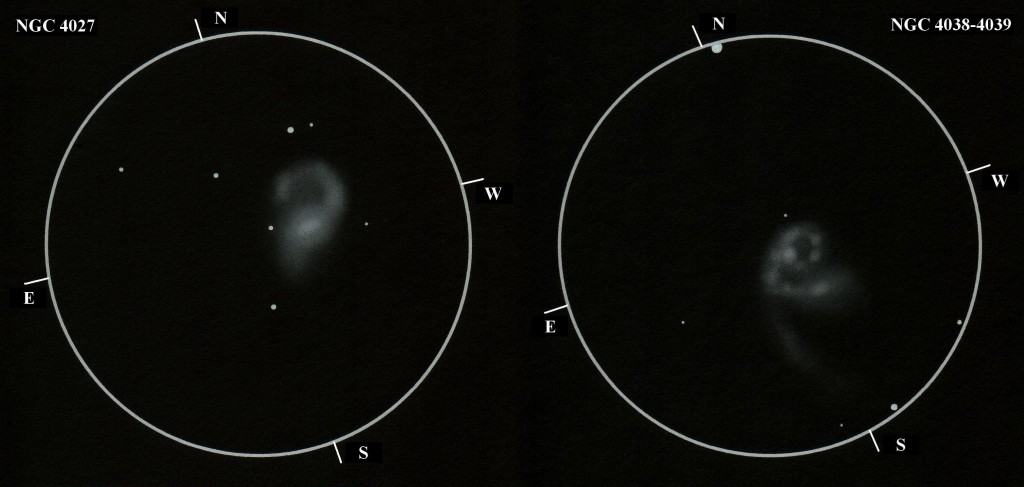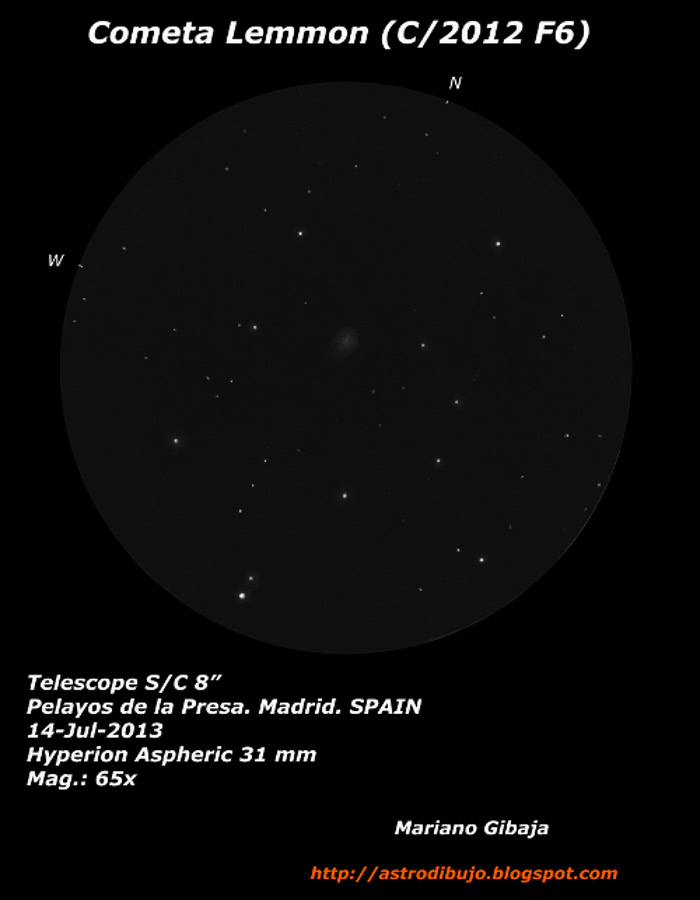
Object Name: C/2012 F6 (LEMMON)
Location: RA: 23h 23m 27.8s, Dec: +63 ° 00 ’50 ”
Magnitude: 9’7
Constellation: Cassiopeia
Observing Location: Pelayos de la Presa. Madrid. SPAIN
Date: July 14, 2013.
Time: 01:15 T.U.
Material used: graphite pencil on white paper. Inverted image and processed with Photoshop.
Celestron Telescope S/C 8″ Mount Cgt-5
Eyepiece: Hyperion Aspheric 31 mm;
Magnification: 65x.
Conditions: NEML: 5.36 (Zone 7 Cep.) Temp.: 16 º C, Humidity 50%
More information: http://astrodibujo.blogspot.com.es/


